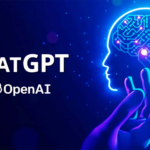⭐ Introduction
Artificial intelligence (AI) is transforming industries with its remarkable capabilities. Two major branches—Generative AI and Predictive AI—are driving innovation in different ways. While Generative AI creates new content, Predictive AI analyzes existing data to forecast future outcomes.
In this article, we’ll break down their differences, applications, and future potential to help you understand which AI model is shaping the future.

🔥 What is Generative AI?
Generative AI is a subset of artificial intelligence that focuses on creating new content by learning patterns from existing data. It uses deep learning models such as GANs (Generative Adversarial Networks) and transformer models to generate text, images, music, and even videos.
✅ How Generative AI Works:
- Training on Large Datasets: The model is fed with massive datasets (e.g., text, images, audio) to learn patterns and styles.
- Content Generation: It uses the learned patterns to create new data that resembles the training data.
- Fine-Tuning: Models are fine-tuned to generate more realistic and contextually accurate outputs.
🛠️ Real-World Examples:
- ChatGPT: Generates human-like text responses.
- DALL·E: Creates AI-generated images based on text prompts.
- Suno AI: Generates AI-powered music tracks.
🔥 What is Predictive AI?
Predictive AI is a type of artificial intelligence that analyzes historical data to identify patterns and make future predictions. It uses machine learning algorithms such as regression models, decision trees, and neural networks to forecast outcomes.
✅ How Predictive AI Works:
- Data Collection: It gathers and processes large volumes of historical data.
- Pattern Recognition: The AI identifies trends and patterns in the data.
- Prediction Generation: It uses statistical models to forecast future events or behaviors.
🛠️ Real-World Examples:
- Netflix Recommendation Engine: Predicts which shows or movies a user is likely to watch.
- Fraud Detection Systems: Banks use Predictive AI to identify suspicious transactions.
- Weather Forecasting Models: Predicts weather conditions based on historical data.
🔥 Generative AI vs Predictive AI: Key Differences
| Feature | Generative AI | Predictive AI |
|---|---|---|
| Purpose | Creates new content. | Forecasts future outcomes. |
| Data Usage | Uses data to generate new outputs. | Uses data to make predictions. |
| Output | Text, images, music, and videos. | Forecasts, probabilities, and insights. |
| Technologies | GANs, transformers, and VAEs. | Machine learning, regression models. |
| Applications | Art, content creation, and design. | Business insights, finance, and healthcare. |
🔥 Applications of Generative and Predictive AI
✅ Generative AI Use Cases:
- Content Creation: Writing blogs, articles, or marketing copy.
- Image & Video Generation: Tools like Runway ML create videos from text prompts.
- Creative Design: Generating unique designs for fashion, gaming, or architecture.
- AI-Powered Assistants: Virtual assistants that generate human-like conversations.
✅ Predictive AI Use Cases:
- Healthcare Predictions: Diagnosing diseases or predicting patient outcomes.
- Financial Forecasting: Stock price predictions and risk assessment.
- Retail & E-commerce: Predicting customer buying behavior and product demand.
- Cybersecurity: Identifying and preventing potential security breaches.
🔥 Pros and Cons of Each AI Type
✅ Generative AI:
✔️ Pros:
- Creates unique and creative content.
- Enhances productivity by automating content generation.
- Helps in personalization and creative ideation.
❌ Cons:
- Prone to bias and inaccuracies.
- Requires extensive data for quality generation.
- Risk of generating misleading or false information.
✅ Predictive AI:
✔️ Pros:
- Improves decision-making with accurate forecasts.
- Enhances business efficiency through data-driven insights.
- Reduces risks in finance and healthcare.
❌ Cons:
- Requires large datasets for accuracy.
- Struggles with uncertain or incomplete data.
- May become less accurate over time without updated data.
🔥 Future Outlook: Which AI Model Will Dominate?
Both Generative AI and Predictive AI are poised for substantial growth, but they serve different purposes:
- Generative AI will dominate creative fields, such as content marketing, gaming, and design.
- Predictive AI will remain crucial in data-driven sectors, including finance, healthcare, and business intelligence.
Emerging Trends:
- Hybrid AI Models: Future AI systems will combine generative and predictive models to deliver both creative and analytical outputs.
- Enhanced Accuracy: Predictive AI will become more precise with larger datasets and improved algorithms.
- Realistic Content Generation: Generative AI will become more lifelike and indistinguishable from human-created content.
⭐ Conclusion
Both Generative AI and Predictive AI play pivotal roles in shaping the future of technology. While Generative AI excels in creativity and content generation, Predictive AI drives insights and decision-making.
As AI continues to evolve, expect to see hybrid models combining both capabilities, delivering smarter and more versatile solutions.
👉 Which AI model do you think will have a greater impact in the next decade? Let us know in the comments!



